Safety and Health Practicesfor Nail Salon Workers and a Training Guide for Nail Salon Worker Safety and Health Outreach Program
Safety and Health Practicesfor Nail Salon Workers and a Training Guide for Nail Salon Worker Safety and Health Outreach Program
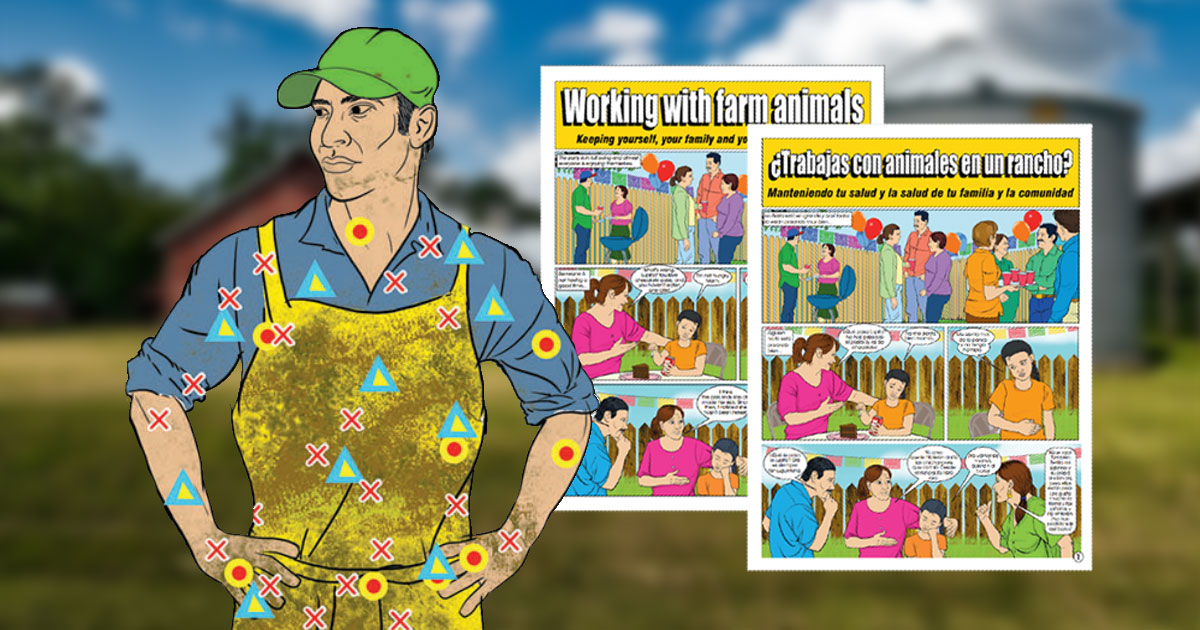
Libro cómic educativo bilingüe sobre cómo prevenir las enfermedades zoonóticas. Desarrollado por MCN en colaboración con la Universidad Estatal de Ohio.
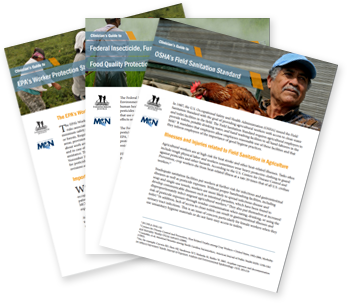
MCN and Farmworker Justice offer these guides to assist clinicians in understanding farmworker health and safety regulations. OSHA’s Field Sanitation Standard; EPA's Federal Insecticide, Fungicide, and Rodenticide Act (FIFRA); EPA's Food Quality Protection Act (FQPA); EPA’s Worker Protection Standard (WPS).

MCN y Farmworker Justice ofrecen estas guías para ayudar a los médicos en la comprensión de regulaciones de salud y seguridad de los campesinos. Información de los Estándares de Saneamiento de la Administración de Seguridad y Salud Ocupacional (OSHA) para los campos; la Ley Federal de Insecticidas, Fungicidas y Rodenticidas (FIFRA) regulado por la Agencia de Protección Ambiental (EPA); la Ley de la Protección de la Calidad de los Alimentos (FQPA) también regulado por el EPA; y el estándar de protección del trabajador (WPS) establecido por el EPA.

MCN and Farmworker Justice offer these guides to assist clinicians in understanding farmworker health and safety regulations. OSHA’s Field Sanitation Standard; EPA's Federal Insecticide, Fungicide, and Rodenticide Act (FIFRA); EPA's Food Quality Protection Act (FQPA); EPA’s Worker Protection Standard (WPS).
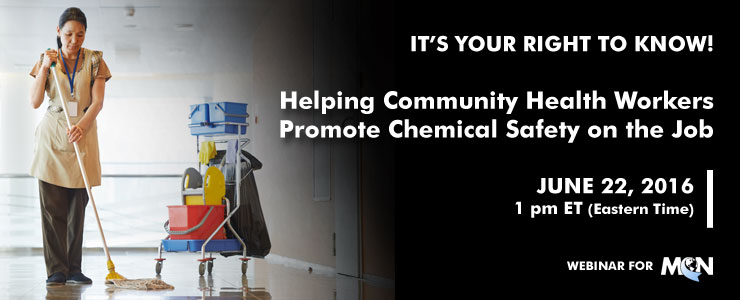
DATE RECORDED: June 22, 2016
PRESENTED BY: Kerry Brennan
This material will be produced under grant number SH-27640-15-60-F-48-SH5 from the Occupational Safety and Health Administration, U.S. Department of Labor. It will not necessarily reflect the views or policies of the U.S. Department of Labor, nor does mention of trade names, commercial products, or organizations imply endorsement by the U.S. Government.
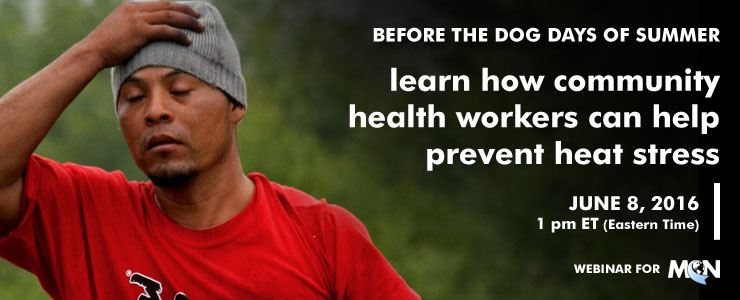
DATE RECORDED: June 8, 2016
PRESENTED BY: Juliana Simmons, MSPH, CHES
This material will be produced under grant number SH-27640-15-60-F-48-SH5 from the Occupational Safety and Health Administration, U.S. Department of Labor. It will not necessarily reflect the views or policies of the U.S. Department of Labor, nor does mention of trade names, commercial products, or organizations imply endorsement by the U.S. Government.
The U.S. Environmental Protection Agency’s (EPA) Worker Protection Standard (WPS) provides basic workplace protections to farmworkers and pesticide handlers to minimize the adverse effects of pesticide exposure. EPA announced major revisions to the WPS in September 2015. MCN and FJ's fact sheet provides a summary of the revised regulation.
In 2015, for the first time in over 20 years, the Environmental Protection Agency updated the Worker Protection Standard (WPS). The WPS provides basic workplace protections for agricultural workers to reduce the risk of pesticide exposre. This issue brief overviews the major revisions that are particularly relevant for clinicians caring for agricultural workers.
On Monday August 18, 2014 MCN submitted technical comments to the EPA regarding the proposed changes to the Worker Protection Standard. View MCN's recommendations for advancing stronger safeguards to protect farmworkers from pesticide exposure.
Este diccionario ilustrado bilingüe de MCN, "Seguridad en Palabras/ Safety in Words", muestra los peligros que hay en el lugar de trabajo y las mejores prácticas para la salud y la seguridad en la agricultura. Desarrollado con el apoyo del Programa de Subvenciones Susan Harwood de OSHA, este recurso refuerza el vocabulario en inglés de los trabajadores que hablan español lo que ayudará a prevenir lesiones en la agricultura.
Print, cut, and distribute this handy bookmark to providers who treat migrant and seasonal farmworker patients. The bookmark includes links and a qr code to connect you to pesticide - related clinical tools and resources. In addition, we've included some useful phone numbers in case of a pesticide emergency.
You can also use the bookmark to keep handy the Health Network phone number to be sure your patients on the move remain in care.
Este libro cómic bilingüe a todo color trata la indemnización laboral por accidente, los derechos y responsabilidades de los trabajadores inmigrantes que trabajan en granjas lecheras. Cuenta la historia de un trabajador mexicano de una granja lechera que se lesiona en el trabajo y los pasos que él y su empleador dan para asegurarse de que reciba sus beneficios y la granja mejore su seguridad. Incluye historias aplicables en todo Estados Unidos y otras específicas de cada estado.
MCN's Director of Environmental and Occupational Health, Amy K. Liebman, appeared on the radio broadcast Epicenter: West Marin Issues on KWMR 90.5 FM to talk pesticides and the Worker Protection Standard. Liebman was joined by Hector Sanchez of the Labor Council for Latin American Advancement. Host Frederick Smith discusses with Liebman and Sanchez a variety of pesticide-related issues, including protections for farmworkers and their families, farmworkers' risks of pesticide exposures, how pesticides are regulated, their health effects on farmworkers and their families, and what healthcare providers can do to mitigate, diagnose, manage, and report pesticide exposures.
During the interview Liebman referenced the Agricultural Health Study, which is available here.
A report prepared by researchers at The George Washington University School of Public Health and Health Services features a wealth of information on occupational health and safety and the migrant population, from farmworkers to fast-food chain employees to restaurant cooks and servers.
News release:
http://defendingscience.org/news/labor-day-looking-back-year-us-occupational-health-and-safety
The Occupational Health and Safety Resource Center is a virtual repository of Spanish educational materials, data sources, and links to bilingual informational websites on occupational health and safety issues related to agricultural work. It also contains an ample list of national and state agencies that have produced materials in Spanish for farmworkers’ health-related problems.
MCNs own Deliana Garcia helped in being a part of the advisory committee to this resource center.
What is the objective? To facilitate a central access point to high quality Spanish educational materials on agricultural occupational health and safety issues for people conducting work on health promotion and prevention activities and on workers’ rights and problems related to agricultural work.
Who are the target audiences? Health-outreach workers (promotores), community advocates, health providers, contractors/employers, farmworkers and their families, and others interested in the health and safety issues of agricultural workers.
What areas are included? The materials cover five key relevant areas: 1) Farmworkers’ rights; 2) Injury prevention; 3) Respiratory illnesses; 4) Heat illnesses; and 5) Pesticide exposure.
How did we do it? To develop the Virtual Resource Center, the process entailed:
Development of new materials: to complement the existing educational resources, we developed a “Promotores Training Manual on Occupational Health and Safety of Agricultural Workers”. Based on an ethnographic framework, the manual presents the perspective of agricultural workers on the five mentioned areas (their stories) and provides community health workers with tools on how to conduct prevention and promotion activities. It also refers them to existing resources. We also produced a series of Spanish and selected indigenous languages Public Service Announcements (PSAs) on these areas.
An informative blog about workers' compensation, risk management, business insurance, workplace health & safety, occupational medicine, injured workers, and related topics.
Glenn Shor, Phd, MPP, Visiting Policy Analyst at the Center for Occupational and Environmental Health at the UC Berkeley School of Public Health.
This report was funded, in part, by The California Wellness Foundation, for UCSF Community Occupational Health Project, Barbara Burgel, Nan Lashuay, and Robert Harrison, 2004 - 2006.
A tool for health care providers and others to assist agricultural workers in accessing workers' compensation benefits. A Farmworker Justice/MCN resource.
These are the slides from an MCN/ Farmworker Justice sponsored webinar titled "Caring for the Injured Worker: Effective Partnerships between Clinicians, Health Centers, and Lawyers."
Originally presented on Wednesday June 26, 2013
PRESENTERS: Brent Probinsky, JD, Probinsky and Associates, PA
Dr. Ed Zuroweste, MD, Chief Medical Officer, Migrant Clinicians Network
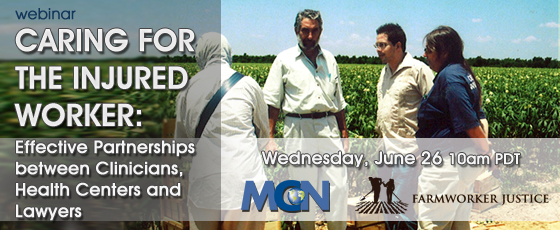
This webinar is the second in a series of seven in our Clinician Orientation to Migration Health.
DATE RECORDED: Wednesday, March 13, 2013
PRESENTED BY: Jennie McLaurin, MD, MPH, Specialist in Child and Migrant Health, Migrant Clinicians Network
To view the recorded version of this webinar, click here.
Farmworker Justice and MCN compiled state-by-state requirements for employers to provide workers compensation to agricultural workers. The document sites case law where applicable.
At Workers' Comp Hub we provide basic information for workers with job-related injuries and illnesses. We also share resources to advance pro-worker advocacy and action.
The Federal Insecticide, Fungicide, and Rodenticide Act (FIFRA) provides for federal regulation of pesticide distribution, sale, and use. All pesticides distributed or sold in the United States must be registered (licensed) by EPA. Before EPA may register a pesticide under FIFRA, the applicant must show, among other things, that using the pesticide according to specifications "will not generally cause unreasonable adverse effects on the environment.''
The 2012 Blueprint for Protecting Children in Agriculture. Awarded 2013 Paper of the year by the International Society for Agricultural Safety and Health (ISASH), this National Action Plan takes an updated look at preventing childhood agricultural injury and death.
This booklet is intended to help Community Health Centers put in place an effective and efficient workers' compensation program.
The importance of clinical diagnostic tools and biomonitoring of exposures to pesticides as well the role of clinicians in pesticide reporting and the challenges clinicians face in accurately diagnosing patients exposed to pesticides are described in a presentation by Matthew Keifer, MD, MPH and Amy K. Liebman, MPA. Click on the link for an APHA policy resolution underscoring the need for clinical diagnostic tools and biomomitoring of exposures to pesticides. This policy supports the information outlined by in the presentation.
HEAT ILLNESS CAN BE DEADLY. Every year, thousands of workers become sick from exposure to heat, and some even die. These illnesses and deaths are preventable.
OSHA has now posted a new Heat Illness Web Page that includes educational materials in English and Spanish, including low-literacy fact sheets for workers, worksite and community posters, and a public service announcement from Secretary of Labor Hilda Solis. The Web page also includes a video from Assistant Secretary Dr. David Michaels (in English with a Spanish transcript). OSHA will be posting additional materials on the Heat Illness Web page, including a lesson plan that employers can use to train their workers to stay safe in the heat and a heat index Smartphone app.
EPA has revoked regulations that permitted small residues of the pesticide carbofuran in food.